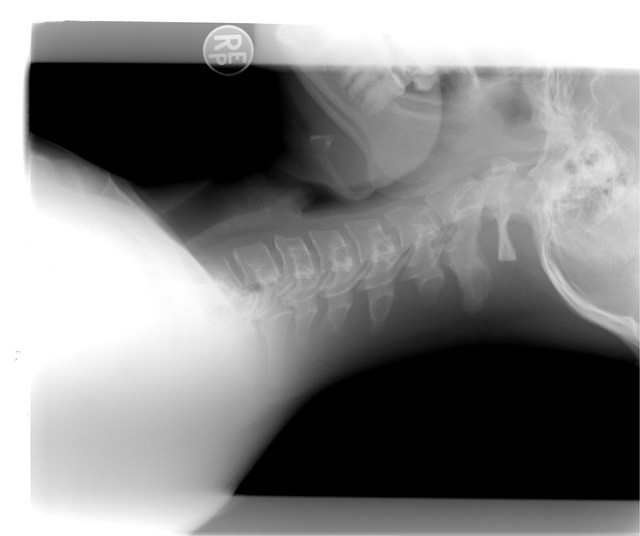Evidence Regarding the Evaluation Process
A systematic assessment of 48 reliability studies on non-specific low back pain physical examination procedures conducted on patient populations found that the majority of procedures had weak reliability (May S. 2006). With a kappa/intra-class correlation coefficient of 0.85 as the maximum criterion, most procedures exhibited either conflicting evidence or moderate to strong evidence of low reliability. Only the technique of pain response to repeated movements exhibited modest evidence for high reliability when a lower threshold was utilised (i.e., a kappa/intra-class correlation coefficient of 0.70), which is still considered good. In addition, four studies looked at the reliability of the McKenzie categorization system itself; three reported kappa values of 0.7 or higher, and one had weak kappa values, although the therapists engaged were unfamiliar with the methodology (May S. 2006).
Several studies, including over 1500 patients with McKenzie-trained therapists, have been done to assess the proportions of patients classified in the various mechanical syndromes (May S. et al., 2006; Hefford C., 2007; Werneke MW. et al., 2010). The most common classifications for lumbar spinal patients were derangement (67–75%), dysfunction (4-6%), postural syndrome (0–1%), and other (8–18%). Extension (70%), flexion (6%), and lateral motions (24%), centralised, reduced, or eliminated symptoms in the derangement category, respectively. The results for the 111 cervical spine patients were quite consistent: 81% had derangement, 1% had irreducible derangement, 8% had dysfunction, 3% had postural syndrome, and 7% had other causes. Treatment modalities for the derangements were likewise comparable: extension (72%), flexion (9%), and lateral motions (19%) (Hefford C. 2007).
McKenzie Method of Mechanical Diagnosis and Therapy (MDT) Assisting in Spinal / Extremity Differentiation
MDT is used by clinicians to determine whether extremity symptoms are caused by a spinal or extremity source. Case studies for individual patients have outlined this process, and two cohort studies have detailed this MDT approach:
Rosedale (2020) Using an MDT-based ‘baseline-test-retest baseline’ method, physicians evaluated which of 369 patients with extremity pain had spinal source’ symptoms and which had ‘extremity source’ symptoms. Overall, “43.5%” of the patients were identified as having a “spinal source” and were treated only with spinal intervention.
Rastogi (2022) Using an MDT history and examination, factors can be generated that indicate whether patients with extremity pain have a spinal or extremity cause of pain. Overall, the optimal number of indications for classification was two (sensitivity = 63%, specificity = 80%).
Reliability of McKenzie method of mechanical diagnosis and therapy classification system
The term “reliability” refers to the likelihood that different examiners will agree on the assessment findings and assign the same patient categorization. This is crucial since treatment decisions are solely based on assessment and classification. In a study conducted by Riddle and Rothstein (1993), they evaluated the reliability of the McKenzie examination system when used by novice practitioners and discovered poor interrater reliability for placing patients into one of the three syndromes (kappa = 0.26), and they reported that the primary source of error was in the therapists’ ability to judge centralization versus peripheralization in the patients they examined. Garcia (2018) summarises the McKenzie method of mechanical diagnosis and therapeutic reliability in a comprehensive study. When administered by “credentialed or diplomated clinicians,” MDT shows adequate lumbar spine reliability and contradictory degrees of neck dependability. However, Fritz (2000) found that physical therapists (kappa = 0.823) and physical therapy students (kappa = 0.763) had excellent interrater reliability when interpreting filmed repeated movement tests of patients with LBP. It also demonstrates that newly qualified student therapists can achieve acceptable levels of reliability without going through extensive training procedures.
Evidence Concerning Prognosis
In response to therapeutic loading, directional preference comprises centralization as well as a decrease in symptoms and/or an increase in limited movement. No other finding in physiotherapy testing procedures has the predictive power of centralization, which is defined as the absence of distal pain in response to therapeutic loading. The distinction between natural history and anything professionally created is significant since the positive evidence for these clinical events stems from their clinically driven nature.
The prognostic value of examination processes was evaluated in a systematic review of 22 papers. Changes in pain location and/or intensity with repeated spinal motions were the only evidence for an evaluation process to inform care (Chorti AG et al. 2009). May S. and Aina A. (2012) found 54 publications on centralization and eight on directional preference in a recent systematic review. Centralization was found in 44% of 4745 individuals with acute back pain (74%), subacute back pain (42%), or chronic back pain (42%). In 2368 patients, the prevalence of directional preference was 70%. In other words, these occurrences are frequently observed in clinical settings. Of the 23 studies that looked into the prognostic validity of centralization, 21 showed a beneficial benefit in patients who had centralization over those who didn’t. Seven out of eight investigations provided evidence that centralization and directional preference are useful treatment effect modifiers. Also, investigations on the McKenzie technique of mechanical diagnosis and therapy (Werneke M. et al., 2011; May S. et al., 2018) have demonstrated its potential to predict patient outcome. Again, the prognosis for immediate and long-term improvement with centralization and direction preference is very good. This means that these evaluation procedures are evidence-based methods of determining appropriate management strategies based on these responses.

References
- Chorti AG, Chortis AG, Strimpakos N, et al. The prognostic value of symptom responses in the conservative management of spinal pain. A systematic review. Spine 2009;34:2686–99.
- Fritz, J. M., Delitto, A., Vignovic, M., & Busse, R. G. (2000). Interrater reliability of judgments of the centralization phenomenon and status change during movement testing in patients with low back pain. Archives of physical medicine and rehabilitation, 81(1), 57–61.
- Hefford C. McKenzie classification of mechanical spinal pain: profile of syndromes and directions of preference. Man Ther 2007;13:75–81.
- Garcia, A. N., Costa, L. D. C. M., de Souza, F. S., de Almeida, M. O., Araujo, A. C., Hancock, M., & Costa, L. O. P. (2018). Reliability of the Mechanical Diagnosis and Therapy System in Patients With Spinal Pain: A Systematic Review. The Journal of orthopaedic and sports physical therapy, 48(12), 923–933.
- May S. Classification by McKenzie mechanical syndromes: a survey of McKenzie-trained faculty. J Manipulative Physiol Ther 2006;29:637–42.
- May S, Aina A. Centralization and directional preference: a systematic review. Man Ther 2012;17:497–506.
- May S, Littlewood C, Bishop A. Reliability of procedures used in the physical examination of non-specific low back pain: a systematic review. Aust J Physiother 2006;52:91–102.
- May, S., Runge, N., & Aina, A. (2018). Centralization and directional preference: An updated systematic review with synthesis of previous evidence. Musculoskeletal science & practice, 38, 53–62.
- Rastogi, R., Rosedale, R., Kidd, J., Lynch, G., Supp, G., & Robbins, S. M. (2022). Exploring indicators of extremity pain of spinal source as identified by Mechanical Diagnosis and Therapy (MDT): a secondary analysis of a prospective cohort study. The Journal of manual & manipulative therapy, 30(3), 172–179.
- Riddle, D. L., & Rothstein, J. M. (1993). Intertester reliability of McKenzie’s classifications of the syndrome types present in patients with low back pain. Spine, 18(10), 1333–1344.
- Rosedale, R., Rastogi, R., Kidd, J., Lynch, G., Supp, G., & Robbins, S. M. (2020). A study exploring the prevalence of Extremity Pain of Spinal Source (EXPOSS). The Journal of manual & manipulative therapy, 28(4), 222–230.
- Werneke MW, Hart D, Oliver D, et al. Prevalence of classification methods for patients with lumbar impairments using the McKenzie syndromes, pain pattern, manipulation and stabilization clinical prediction rules. J Man Manip Ther 2010;18:197–210.
- Werneke, M. W., Hart, D. L., Cutrone, G., Oliver, D., McGill, T., Weinberg, J., Grigsby, D., Oswald, W., & Ward, J. (2011). Association between directional preference and centralization in patients with low back pain. The Journal of orthopaedic and sports physical therapy, 41(1), 22–31.




